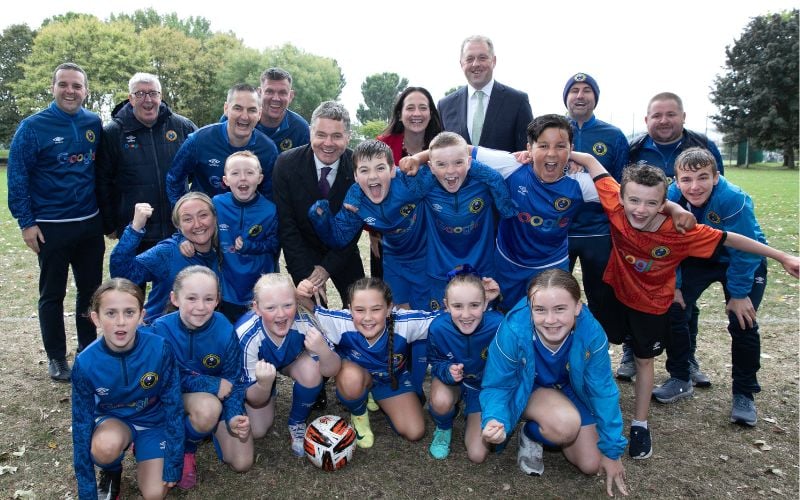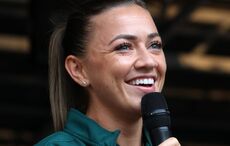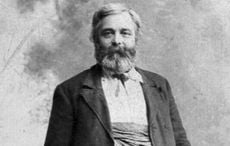| Irish captain, now injured Paul O'Connell |
During Ireland's 17-17 draw with France in Paris, the other side of playing without a true openside flanker was obvious as Ireland's physicality allowed them to come close to their first victory in Paris in a decade.
Sean O'Brien may have had a quiet game as a ball carrier, but he, Stephen Ferris and Jamie Heaslip imposed themselves on their French counterparts.
Toughness and aggressive play is something that the Irish side has lacked in recent times. It was very fulfilling to see the attitude and confidence breath through the team once that changed in Paris last weekend.
In fact, the team's first try was as a result of more aggressive play.
Ireland generally employ a drift defense which is designed to drop off attackers and squeeze the space forcing them to the sideline. Instead, this past weekend Ireland aggressively attacked the space by targeting the french players opposed to forcing the ball wide and giving up yardage.
-----------------
Read more:
Five murdered Irish emigrants will be reburied in a new grave today- VIDEO
The ten very best ways to spend St.Patrick’s Day this year
-----------------
This aggressive play, coupled with some poor French passing, allowed Tommy Bowe to steal an interception for the opening try of the match. While most will simply blame the French players for lackluster passing, the reality is with a less aggressive attitude, Bowe would never have been close to being in position to make that play if he hadn't changed his defensive mindset.
While Ireland exhibited more physicality and aggression in the first half than at any other time since prior to last season's world cup, the second half wasn't a similar story as that physical dominance was lost.
Even though Ireland didn't lose the game, surrendering the lead without scoring in the second half made it feel like a loss. The fact that the squad lost two starters for the rest of the tournament only disheartens the nation further.
The silver lining for fans, and the team alike, is that the team's performance on the field could actually be improved by the loss of Paul O'Connell and Connor Murray.
In France, Ireland were at their best when the pack attacked rucks and quick ball came from the scrum half. In the first half, Murray was getting the ball away quickly however in the second, he was repeatedly caught or affected by French players.
Murray dropping out of the team will allow Eoin Reddan to start once again. Reddan is an experienced international who plays the game differently to Murray.
While Murray provides a more physical presence around the breakdown area with the threat to run with the ball, Reddan specializes in getting the ball to his out-half in the quickest possible fashion. Reddan isn't palpably worse than Murray, he just offers different strengths and weaknesses which will alter the way Ireland play the game.
Reddan can only pass the ball away as quickly as he gets it. Losing Paul O'Connell should actually help him in that area of the game.
O'Connell receives a lot of praise, rightfully, as a world class lineout jumper. He also receives a lot of praise as a world class second row. However, unless his lineout play is enough to justify that, O'Connell isn't really a loss to the Irish team.
His leadership will be missed, but from a sheer rugby point of view, a pairing of Donnacha Ryan and Donnacha O'Callaghan will better benefit Ireland as a whole. O'Callaghan and Ryan aren't as big a fan favorites as O'Connell because they do a lot of work that goes unnoticed by the typical rugby fan.
While O'Connell spends most of his time around the ball, O'Callaghan and Ryan focus on hitting rucks, making tackles and contributing to the overall aggression of the pack. The Munster duo fill the role that second rows are naturally built to fill. They should only really have the ball when they are taking part in lineouts.
Instead of doing this, O'Connell spends a lot of his time as a ball-carrier for Ireland. Simply be their dimensions, tall and with a high center of gravity and plenty of surface to hit, second rows are not built to be ball-carriers.
O'Connell regularly lines up as a first receiver or waits in midfield to receive the ball and rarely makes ground. Ireland use O'Connell as a ball-carrier to present the ball for their scrum-half because he is not a line-breaker. He doesn't have breakaway speed or power to really impact the game as a runner.
Without O'Connell on the field, Ireland will have two second rows who are committed to hitting rucks which will in turn provide quicker ball for Reddan. It will also afford the back row players more opportunities to carry the ball.
Even though Sean O'Brien will also miss the game through injury, having Peter O'Mahony, Jamie Heaslip, Cian Healy and Rory Best as ball carriers should make Ireland a much more punishing and difficult team to play against.
With more penetration, quicker presentation and faster passing, Ireland's back-line, and team as a whole, should be a greater attacking force.
If not a greater team altogether.
Tweeting @Cianaf




Comments